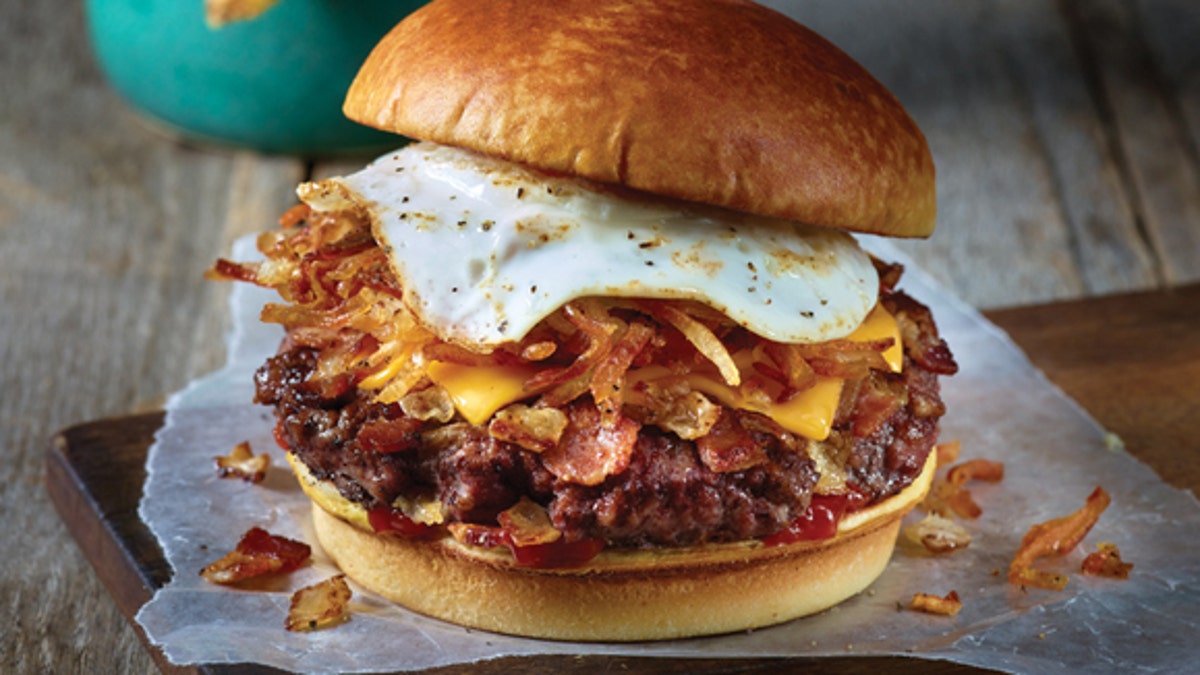
The All-Day Brunch burger features a fried egg, bacon, and hash browns. (Applebee's)
The rise of fast casual chains like Chipotle may have taken a bite of traditional sit-down restaurants like Applebee’s and Chili’s.
But the solution to winning back customers may an American staple on menus for decades: the burger.
According to market research firm The NPD Group, casual dining chains experienced an overall increase in lunch time visits for the first time in five years, due in large part to new burger offerings.
"I think they've stopped the bleeding a little bit," Bonnie Riggs, a restaurant industry analyst with NPD, told CNBC. According to NPD and CREST data research, casual chain restaurants saw a 2 percent rise in lunch visits, from June 2014 to June of this year. And burgers and have been key to growing sales.
Outback Steakhouse recently rolled out a double burger and CEO Elizabeth Smith said she was “delighted with the performance.” And Buffalo Wild Wings launched its “B-Dubs Fast Break”—a quick serve combo meal option—in April.
And Applebee’s and Chili’s have both offered amped up burger choices as well. Applebee's is serving up an all-day brunch burger, piled high with bacon, a fried egg, hash browns and American cheese while Chili’s introduced a sweet and smoky barbecue burger loaded with onion rings, pepper jack cheese and bacon.
"For casual dining restaurants, burgers have been able to level the playing field with quick service restaurants on price. For example, the average price of a burger at casual dining is $9.02 and is $5.62 at fast casual," says the report.
The data found that the number of burgers ordered at these restaurants rose 3 percent during the period analyzed. Though small, the figure was the only menu category to grow for this market sector.
Burgers served in fast food restaurants, by comparison, did not experience any growth during the same period and overall casual restaurant dining visits have flatlined. But this is welcomed news to these chains after several years of steady decline.
Despite the rise in beef prices, fast casual chains are still promoting burgers. But industry insiders says it’s a smart move for these restaurants to appeal to consumers opting for a less expensive way to enjoy beef.
"Yes, we have high beef costs. What people are doing is they're trading down on the menu," Riggs told CNBC. "When they go to full-service restaurant, instead of having a steak, they're having a burger."
